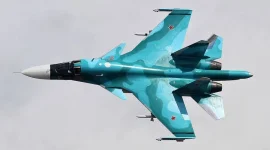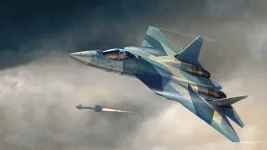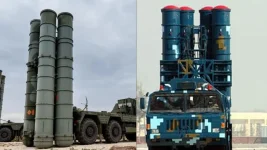- Views: 9K
- Replies: 113

In a bid to replace India's aging MiG-29 fleet, Russia has intensified its efforts to attract India's interest in its Su-75 Checkmate light fighter jet. The single-engine, lightweight stealth fighter, unveiled in 2021, is being positioned as the ideal successor to the MiG-29s, which India and several other nations are looking to replace.
Russia is particularly focused on India, a long-standing partner with a pressing need to upgrade its fighter jet fleet. A 2021 promotional video for the Checkmate, featuring pilots from potential buyer countries, including India, underscored Russia's strategic marketing approach.
Despite Russia's aggressive sales pitch, India has yet to commit to the Su-75. Several factors might be influencing India's cautious stance. The absence of a functional prototype is a key concern. While Russia claims a 2025 maiden flight for the redesigned Su-75, India may prefer a fighter jet with a proven track record.
Moreover, India is actively pursuing its own indigenous solution, the Tejas MkII, specifically designed to replace its MiG-29, Mirage-2000, and Jaguar fleets. This program aims to fulfill India's requirement for nearly 200 new fighter jets, potentially offering greater long-term benefits in terms of self-reliance and technology transfer.
Russia's renewed push to involve India likely stems from the lack of confirmed international buyers for the Checkmate program. High-profile marketing tactics, such as featuring pilots from potential buyer nations in promotional videos, highlight Russia's eagerness to secure partnerships.
Russia is offering the Checkmate at an attractive price point of $30-35 million per unit, with a cost per flight hour projected to be significantly lower than the Lockheed Martin F-35. The Su-75 boasts impressive specifications, with a designed maximum speed of Mach 1.8, a range of 2,800 km, and a maximum takeoff weight of 26,000 kg.
However, India's commitment to its indigenous defense programs, including the Tejas MkII and the Advanced Medium Combat Aircraft (AMCA), might influence its decision on the Su-75. With the Tejas MkII expected to replace a significant portion of its fighter fleet by 2035, and the AMCA slated to replace older Su-30MKI squadrons from 2040 onwards, India may prioritize self-reliance and domestic technological development.
While Russia's Su-75 Checkmate offers an attractive proposition on paper, India's decision will likely hinge on a careful evaluation of its operational capabilities, cost-effectiveness, and alignment with its long-term strategic objectives.



